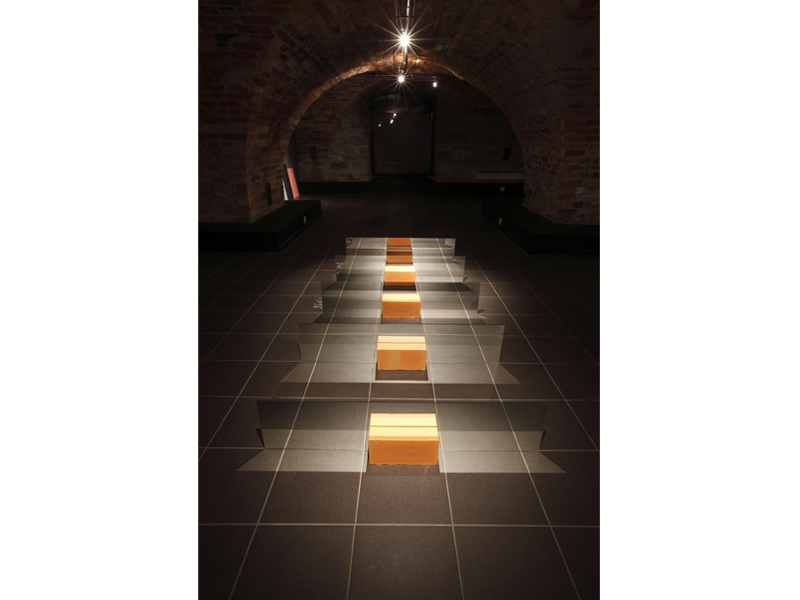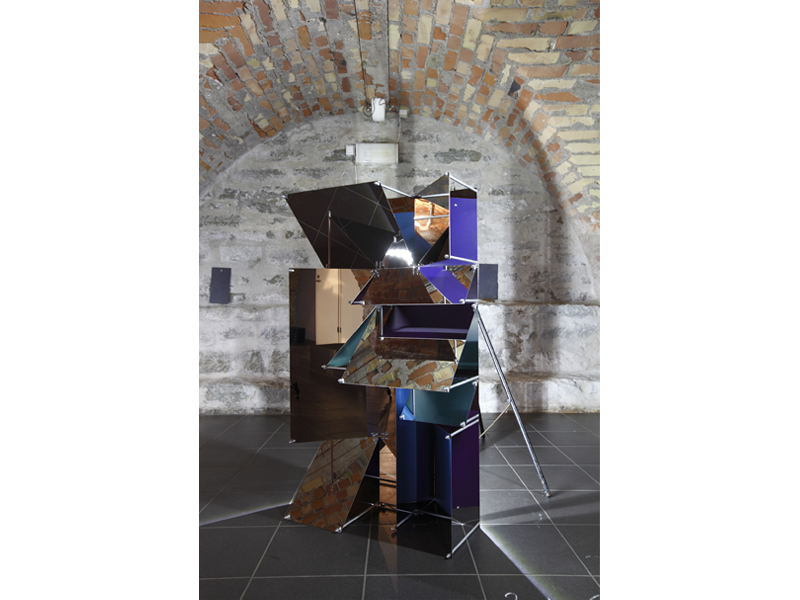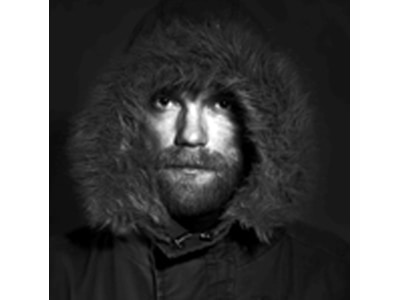
Peter Skubic is an Austrian artist with Serbian roots. Since graduating from the University of Applied Arts Vienna, he has exercised a strong, provocative, and trailblazing voice in the field of contemporary jewelry while establishing a powerful presence in the performance art, body art, and sculpture scenes.
We shouldn’t let ourselves be misled by the aesthetics of Skubic’s works, fined-tuned to the most minute of details: He interprets art as an intellectual discipline. One undertaking left a very deep mark on jewelry history—and gives insight into the breadth of his interests: In 1975, the 40-year-old Skubic had a stainless-steel plate surgically embedded in his arm – opening up the then radical possibility that ornamentation might not need to be visible in order to take place.
On display at his recent exhibition, Mirrors Are Invisible, at the Museum of Estonian Architecture, were 15 spatial objects that bear Skubic’s renowned signature: polarized sheets of steel and of pure color set to interact in reflections, along precise proportions. Among these were also his very first reflection piece with six Rugs, from the year 1990. The mirror has been an important and very central leitmotif in Skubic’s works for 35 years already. As reversed simulators of reality, mirrors open a Pandora’s box of interpretations, and for him they signify the negation of reality.
A few weeks before the opening of the exhibition, we sat down to talk about nothingness, cats, and everything in between.

Tanel Veenre: It seems like you have an unusual flair for thinking big (for example, The Black Hole Is the Inside of the Ring of God [1991]). What is your relationship with God like? With the universe? Can we touch upon these big, abstract topics?
Peter Skubic: The work references the idea of God from a jewelry-maker’s viewpoint. If God exists, that is.
The universe is now almost 14 billion years old. We can see the furthest objects at a distance of more than 13 billion light years. And what we see is actually gone. We look into the past. Then, we have invisible dark matter, and then we have quantum physics.
Religions allow us to talk to God. But the idea seems too small to me. If God exists, female or male, it should be so big that our brain cannot reach it. Our brain is not developed enough to imagine God. She/he could exist, but not for us. What we call “God” is a surrogate.
The conclusion for me is: God doesn’t exist. Better for me, better for God.
When I asked you [before the interview] about themes you wouldn’t laugh about, you talked about God … But I still want to ask you something about laughter. What is the last thing that made you laugh deeply?
Peter Skubic: Love and friendship are the most important things in the world. Talking with good friends makes me laugh—connecting with people makes me happy. Then, I can laugh uncontrollably. Laughing becomes a sense of life.
I once heard it’s impossible to forget Skubic’s laugh and that whimsical sparkle in the corner of his eye. It seems like laughter gives you a lot of power (just as it gives power to people around you). What are the proportions of humor and seriousness in your art?
Peter Skubic: Laughing and working are two facets of one person. Sometimes, there is a little humor in pieces like the “finger-rings” (rings in the form of fingers) and Earring Vincent! (a ring in the form of an ear).
What are your moments of greatest joy? Those moments where you feel like you are filled to the brim with happiness, and nothing can worry you?
Peter Skubic: I feel filled to the brim with happiness and like nothing can worry me very often.
Can you describe some of these moments?
Peter Skubic: I have forgotten them…

You’ve said, very intriguingly, “I think that my pieces are baroque; not in curves, but in straight forms.” How can that be understood?
Peter Skubic: My pieces are “baroque.” I know it, because other artists interpret the same theme more briefly, with more consequences. If you see a hole in my work, then it isn’t just a hole—the hole in a ring also refers to a vagina, the hole in a sheet of metal refers to a matrix to draw the inside of a ring, and the hole is also nothing. But that’s the way of my personal complexity.
You have created your own universe, but none of us can escape the time and space we are in. To what degree do you still feel connected to your temporal and stylistic categories? If you had started making jewelry now, in the year 2016, then how different would your work have been?
Peter Skubic: I do start again every day. Right now, I’m working and thinking about minimalism; about how minimal I can go with the least amount of intervention possible. I try to find the point at which the limits of nothing are more than nothing. But it’s impossible to find “less than nothing” in my work, since the inspiration is the Big Bang—the starting point, at which there is nothing. Yet, after that point, everything developed into what we see and what we now know as our universe.
I see three major themes to my works: eroticism, tension, and mirrors; one after another. What connects these three themes is invisibility. Eroticism is a very private theme, not really for the public. Tension isn’t visible—only the result is. Mirrors are never seen. Between these themes, I’ve been interested in idols and smaller topics like car wheels.
Can you explain your “less than nothing” philosophy in greater detail?
(This answer arrived in the form of a hand-written postcard)
Peter Skubic: In German, “less than nothing” is “weniger als Nichts.” I wish you could understand it, but words are only one way to realize “less than nothing.” I also wrote on a mirror: Nothing is the surface of the mirror = 0. The reality is + (plus) and what you see in mirror is – (minus), which means “weniger.” It’s mathematics.
It seems like throughout your career, you have encouraged yourself to push your own limits (and those of jewelry). How conscious is this process? Have you ever struggled with the meaning and the concept of jewelry?
Peter Skubic: My problem is the construction of my brain. In my mind, I am always on the way, never stopping.
And never finding an absolute result; only fragments of it. So, I do act in jewelry.
Can you imagine creating art without using your brain?
Peter Skubic: I think—no.
When will it be enough?
Peter Skubic: When I turn 100—that’ll be enough. I’m no more than 80 years old right now, and sometimes I think about what could happen in the next 19 years, and it seems like this might finally be enough.
When I asked you to send me a picture of your hands, you sent me one with a cat. Is there any significance? What is your relationship to animals?
Peter Skubic: That cat, he was my great friend—he has passed away. But I still have three cats now.
I like animals in general; especially bats, spiders, and octopuses. And some big birds have nested in my garden.
You’ve said that our visual comprehension makes up only a fraction of our perceptive abilities. How sensitive (sense-conscious) are you as a creator? How important is it for you to go beyond the visual sense?
Peter Skubic: Tanel, you are a great artist. Are you sure that you always know how a piece happens? The visual result is only one aspect of a work. Behind this is an idea, the concept of making, the influence through life lived before…
Best greetings from my lucky garden.

INDEX IMAGE: Exhibition view, Peter Skubic, Mirrors Are Invisible, Museum of Estonian Architecture, Tallinn, photo: Reio Avaste/Museum of Estonian Architecture




